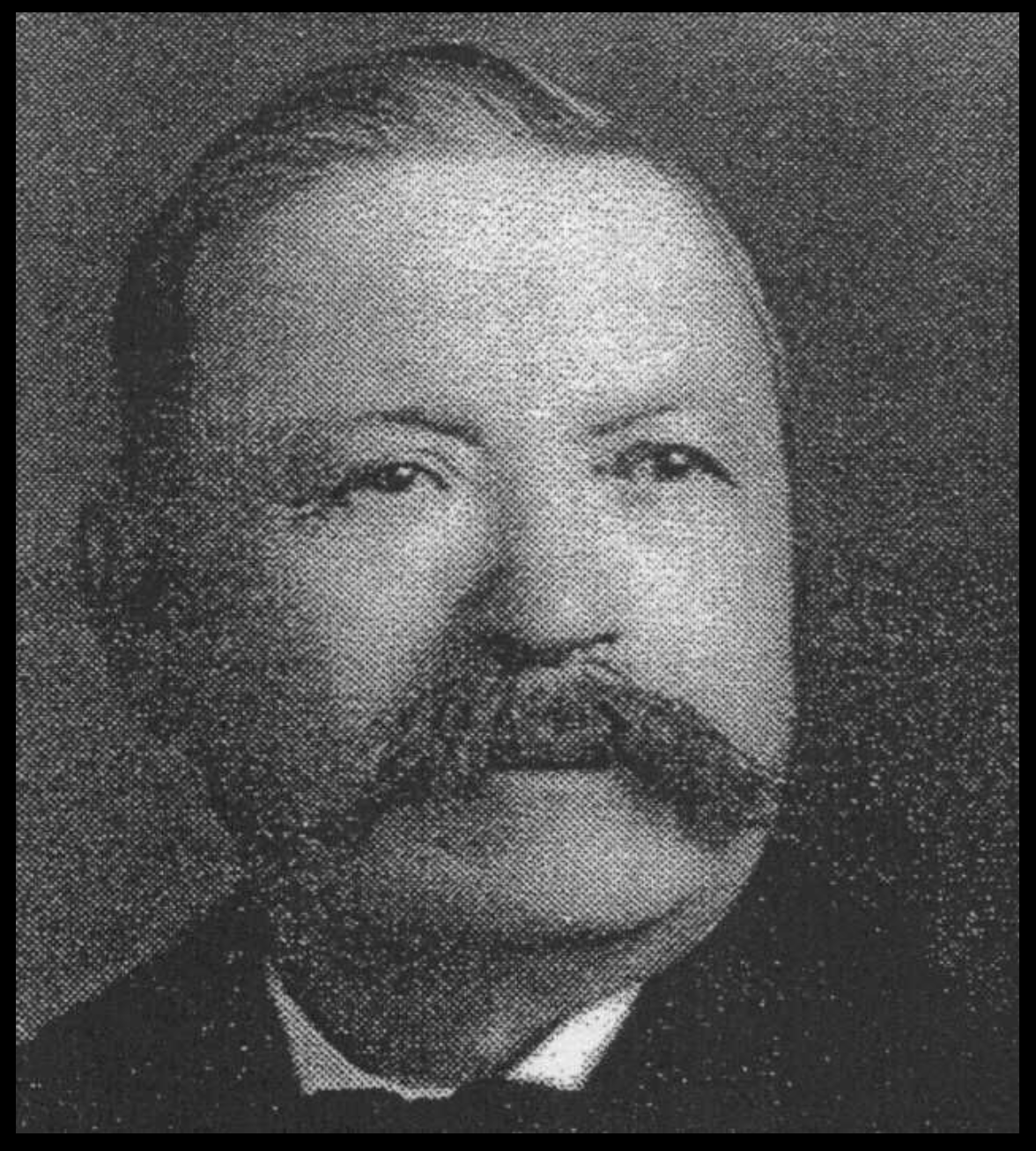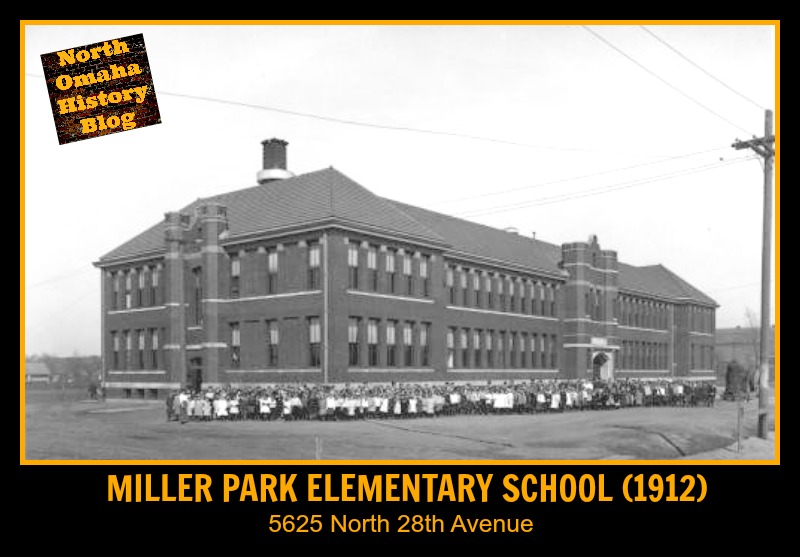The Saratoga neighborhood of North Omaha was once a lush suburb located far from Omaha, but close enough to get business done. When streetcars arrived in the 1880s, there was a housing boom that left one man a millionaire and allowed him to build extravagant houses in the area. This is the history of one of those homes, called the Gruenig Mansion.
Replacing a Castle
Charles Gruenig was a pioneer real estate mogul who arrived in Omaha in 1869. He was a grocery store owner in the Saratoga suburb of North Omaha, and bought the land in the community as quickly as he could. Amassing a lot of it quickly, he was the main land owner around the Saratoga neighborhood by the 1890s. Soon, he became wealthy selling land to various concerns, including each corner at North 24th and Ames Avenue, and the land which holds the fourth Saratoga School at North 24th and Meredith. Eventually, he bought and sold properties in downtown Omaha, too, and built his holdings quickly.
The Gruenigs built a 20-room home referred to as the “Gruenig Castle” on the northwest corner of North 24th and Fowler in the 1870s. Something happened to it that led to the family building a new home. In the 1910s, Charles Gruenig and his wife Hannah built a 15-room house at 2406 Fowler Avenue. Located in the Saratoga neighborhood, then it was a suburb of Omaha with it’s own booming commercial area and industrial section. Gruenig’s mansion was near Thomas Stroud’s mansion, as well as the posh Rome Miller mansion built in 1898.
Gruenig sold land primarily around the intersection of North 24th and Ames, and was worth $1,000,000 when he died in 1920. His wife inherited the wealth and the house. Mrs. Hannah Gruenig died in 1942.
Becoming a Care Facility
Soon after Mrs. Gruenig died, George Bott acquired the home and started caring for old people there. In 1947, Mr. Bott and his wife sold it to George B. Earl, who kept the house for the same purpose. There were 20 people living there when they bought it for $18,000. Earl’s Rest Home was located there for several years. Advertised for years as a home for “retired, aged, convalescent,” the facility said it had “trained supervision” and invited interested people to come inspect. There was also nursing provided, and in the 1950s the ads included “TV.” The facility only hired white people as staff into the 1960s, and discriminated against Black people who wanted to use the facility. The building integrated in 1966.
At some point in the 1960s, the facility became known as the Prairie Park Nursing Home. In 1970, the company added onto the existing building, which hosted 27 “welfare” guests and 90 total residents. James Keillor was the operator of the home, and was cited by the Omaha Fire Department for an unsafe facility during that construction. The fire department closed the facility that year, and Keillor arranged for all the residents to be moved to a facility in Fremont.
Over the next year, the entire facility was rebuilt and reopened in 1971. Keillor became president of the Nebraska Nursing Home Association that year, and lobbied for the organization for several years afterward. In 1974, he ran for the Nebraska State Legislature and lost. In 1976, Keillor was in the process of losing his license to operate the home when he sold it to another company.
Foulness at Fowler Manor

Renamed the Fowler Manor that year, it was operated by Oral Tague. That facility immediately adopted an open admission policy that completely stopped discrimination. Within a year though, Tague gave up his license for the facility. Three states had cases against him for operating nursing homes in poor conditions, including the State of Nebraska, which said that the Fowler Manor had roaches and rat infestations. According to the Omaha Star, the Health Department also said there was “inadequate staffing, insufficient staff training, poor record keeping, and poor handling of medication.”
In 1977, the facility was sold to Robert Hindman, who renamed it the Omaha Manor. It was then a 170-bed facility for developmentally disabled people. However, it failed to be licensed and the building stayed closed. When the facility was finally reopened, it was called the Omaha Manor and was a 48-bed home offering intermediate care for developmentally disabled people. The head of the organization, Gary Firmender, asserted that “It bears no resemblance to Fowler Manor–either in philosophy or appearance.”
The facility became the Intermediate Care Facility for the Elderly in 1987, reverting back to the original mission of the building. Remodeled and refurbished, they advertised large rooms and personalized care, 24-hour licensed nursing care, and wholesome food. They kept using the name Omaha Manor; however, the next year, it was renamed the Northview Villa ICF and opened with 80-beds. However, after failing a health inspection in 1996 the facility filed bankruptcy and closed immediately. All of the patients were moved out immediately and the facility was put into temporary receivership. The building permanently stopped being a care facility then.
Community Action Finds a Home

In 1995, the Greater Omaha Community Action (GOCA) acquired the building to consolidate its offerings. Moving out of several other North Omaha facilities, GOCA advertised the building as a “One Stop Service Center” for all the programs of the agency. It was also called the “North Community Center.”
In 2007, the nonprofit was renamed to Eastern Nebraska Community Action, or ENCAP. They continue to operate the facility at North 24th and Fowler today, and keep offering programs to help people out of poverty. According to their website, ENCAP works to “reduce the power of poverty in Eastern Nebraska through direct service and results-driven partnerships. ENCAP provides emergency rent and utility assistance; hunger relief; senior wellness initiatives; utility assistance; behavioral health services; and wrap-around case management.”
There is no historical plaque or designation that identifies the significance of this historical location in the Saratoga neighborhood today.
You Might Like…
- A History of the Saratoga Neighborhood in North Omaha
- A History of the Stroud Mansion in North Omaha
- A History of 24th Street in North Omaha
Elsewhere Online
- Eastern Nebraska Community Action Program official website
- Charles Gruenig on Findagrave.com
- Hannah Gruenig on Findagrave.com
BONUS








Leave a comment